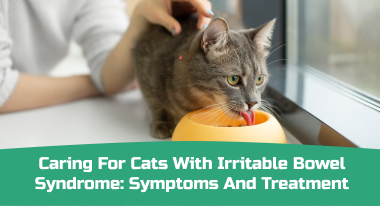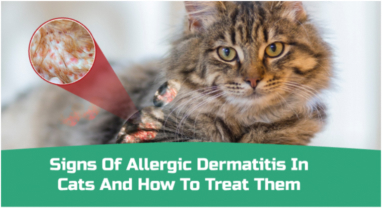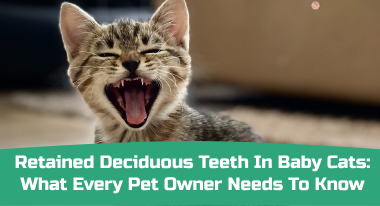Table of Contents
Arthritis is among the common conditions observed in senior felines. It is an inflammatory condition that affects your pet’s joints and can lead to pain, stiffness, and impaired mobility. A study has shown that 90% of felines aged over 12 years get osteoarthritis (OA).
Also, it is evident from several studies that have found that older cats are more prone to the incidence of arthritis. One of the research further has shown that 61 % of those aged 6 & more had OA in one joint and 48 percent in case two affected joints. Felines with age 14 & above were found to have an 82 percent chance of having arthritis.
In addition, the studies on feline arthritis further have offered the insight that around ⅔ of the cats have radiographic signs of arthritis. Arthritis in the limb joints affects between 60% of felines. While the research data may be daunting for you as a pet owner, the positive news is that degenerative joint disease is treatable with medication and diet changes improving your pet’s quality of life.
Often the arthritis treatment may involve diet changes, exercise programs, and anti-inflammatory medications like prednisone and NSAIDs (non-steroidal anti-inflammatories). To make you aware of feline arthritis, we have enlisted the signs of feline arthritis and symptoms & also discussed treatment options and home remedies.
What Are The Causes Behind Arthritis In Cats?
Osteroartietsies or degenerative joint disease (DJD) causes inflammation and typically cat get arthritis of the shoulders, wrists, knees, elbows, and hips most frequently; however, any body joints can be affected. It is noteworthy that even though arthritis is prevalent in a geriatric cat, it is not merely a part of aging. Instead with proper care and treatment, your cat can comfortably enjoy its golden years, although there is no way to reverse the degeneration in the joints in senior years.
Osteoarthritis (OA) cartilage that cushions the joint degeneration is worn, resulting in inflammation and discomfort and damaging the joint. Even though felines developing arthritis are yet to have an apparent predisposing cause, certain factors boost the risk of cat arthritis.
Specific cat breeds have an increased risk factor due to underlying genetic joint problems. It primary includes:
- Hip dysplasia is an abnormality of the coxofemoral or the hip joint development.
- Patella luxation or the dislocation of the feline patella or kneecap, caused by the congenital malformation due to a hereditary defect.
- Abnormality of cartilage named osteochondrodysplasia, a disorder of the development of bone & cartilage.
Following are the cat breeds more prone to these genetic ailments:
Table: 1
| Genetic underlying joint issues in Cat Causing Arthritis | Cat Breed |
| Hip dysplasia | * Maine Coon * Persians * Siamese * Himalayan |
| Patella luxation | * Abyssinian * Devon Rex |
| Osteochondrodysplasia | * Scottish folds |
- Injury or trauma is another significant cause of arthritis in cats. It may commemorate fractures, dislocations, ligament damage, muscle injury, joint infection, damage/erosion of cartilage, and other joint injuries. All these factors in your pet also can lead to abnormal joint conformation resulting in secondary osteoarthritis.
- Acromegaly is another prime cause of arthritis. It is a condition seen in senior felines where a tumor formed in the pituitary gland secretes excessive growth hormone. If your pet suffers from the disease, it may develop diabetes mellitus, and also it can develop secondary arthritis in its joints.
- Obesity in cats is also a factor that you need to keep in check and adopt a healthy cat exercise routine if your pet is suffering from arthritis problems. Even though there is no specific scientific proof of obesity causing arthritis, it can worsen the existing arthritis condition in your cat.
What Are The Signs Of Feline Arthritis?
When your pet suffers from arthritis, the signs may vary, and it may not necessarily demonstrate similar symptoms all of the time. However, certain common symptoms seen in a cat suffering from arthritis are :
- Difficulty claiming up and down
- Stiffness in walking or lameness
- Swollen or sore joints
- Hesitant to jump up or down the furniture
- Aggression towards other cats or grumpy when you try to stroke or pamper
Symptoms of arthritis in cat further includes:
- Refusal to use the litter box or use the cat entrance
- Lack of grooming
- Scruffy or matted fur
- Irritability & sleeping more than usual
- Reluctant to play or do other activities
Arthritic pain often causes behavioral changes in the pet. If your puffball is suffering from the ailment, it may be irritated & do not enjoy being petted, and will likely. Also, the pain caused by the joint disease makes the pet reluctant to scratch posts, resulting in overgrown nails. The feline also will stop grooming itself, as it is painful for the pet to bend or twist. In some cases, the feline also may urinate at inappropriate places around the house as it avoids using the litter box.
To help you get aware of the signs of arthritis in cats, we have created an infographic illustration to help you give you a crib idea. Let’s have a look:

How Can A Vet Treat Arthritis In Cats?
A vet can help your pet relieve the pain by performing a physical examination on your cat. In certain scenarios, vets also examine blood or urine based on the severity. To track the wear and tear and monitor other damages, the vet may suggest x-rays. Diagnosis of arthritis in a senior cat is also made by examining the characteristic symptoms; the vet is able to detect pain, discomfort, swelling, or other changes affecting certain joints. In treating feline arthritis following measures are adopted:
- Pain Treatment With Medicine
The vet prescribes medications to control the pain and inflammation associated with arthritis. It is noteworthy that felines’ arthritis drugs should only be used under direct supervision by a vet to avoid potential side effects. The drugs used to treat feline arthritis include non-steroidal anti-inflammatory drugs or NSAIDs. There are a number of different NSAIDs that are licensed for use in felines. The first licensed NSAID for long-term use in cats was meloxicam, and the drug is effective in treating arthritis in cats at appropriate doses. Certain other medications used to treat arthritis in felines include.
- Amantadine
- Tramadol
- Buprenorphine
- Gabapentin
In specific scenarios, the vet also prescribes a corticosteroid anti-inflammatory drug rather than NSAID. However, these two categories of medication cannot be used simultaneously. Also, avoid using the drugs without the prescription of a certified vet.
If you are struggling to find a vet, you can utilize the online directory GreatVet to find the top-rated vet in your area. The platform allows you to browse the clinic profile, aiding you in finding a suitable vet clinic for your pet. Booking is also simplified as you can book your vet appointment directly within a few clicks.
- Surgical Treatment
Based on the severity of the arthritis vet, surgery might also be considered. However, pet surgeries are available at specialist veterinary hospitals. Surgery often is effective in alleviating symptoms & slow the disease’s progression. The surgical process may consist of joint removal or replacement, reconstructive procedures, and the surgical removal of bone or cartilage fragments becoming the aggravating causes of pain.
- Weight Management & Dietary Supplements
If your pet is suffering from arthritis, weight management is crucial. Obesity often exacerbates arthritis. Therefore a daily exercise routine for your pet is vital. You can consult a vet for a cat exercise plan, for a controlled weight-loss vet also recommend a special diet.
Overweight stress the aching joints, you also need to keep your pet active. You can set a regular interactive playtime with yourself and also ensure that you maintain the exercise routine, as it helps in weight loss. Usually, diet supplements are designed to reduce inflammation, and glycosaminoglycans improve cartilage quality. However, you should take a vet’s suggestion before making any dietary changes for your pet.
Apart from the treatment following are some of the alternative therapies for treating arthritis in cats:
Table: 2
| Treatment | Process |
| Joint Supplements | Omega 3 and glucosamine are provided with other medicines to slow down the progression of arthritis. |
| Additional Therapies | Acupuncture, Hydrotherapy, etc. |
| Injectable Joint Protectants | Vet inject glycosaminoglycans for an average of four weeks. |
| Photobiomodulation (PBMT) | A non-invasive treatment where the vet uses a device that emits therapeutic light waves to ease pain & reduce inflammation. |
Can Felines Arthritis Be Prevented?- Final Thought!
As a pet owner, you can adopt specific measures during the growing years of your pet. Ensuring a lean body condition throughout the growth years and adulthood is an effective way to prevent arthritis in cats. However, you may not predict breed-specific abnormalities or injuries.
But, balanced health nutrition, optimal body condition, and regular exercise can be reliable weapons to delay arthritis in your furry friend. Also, consult your vet to prepare the best plan for your pet to prevent arthritis. If your pet suffers from a joint ailment, you can provide soft padded bedding, non-skid floor surfaces, and stool to reach the higher surfaces. Besides, as soon as you witness any sign of the ailment, consult your veterinarian, as these certified medical professionals can make the best feeding & medication recommendations for your pet.
Disclaimer: The content on the site is for educational purposes only, and it does not provide medical advice. The shared information must not be treated as a substitute for or alternative for medical practitioner advice, diagnosis, or treatment. Regarding any concerns about your pet’s health, seeking veterinary guidance is of utmost necessity. Each pet has specific health, fitness & nutrition needs. Do not disregard, avoid or delay pet health-related advice from veterinarians based on reading the information provided on this site.



